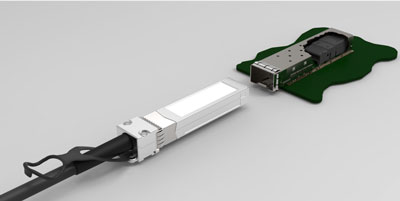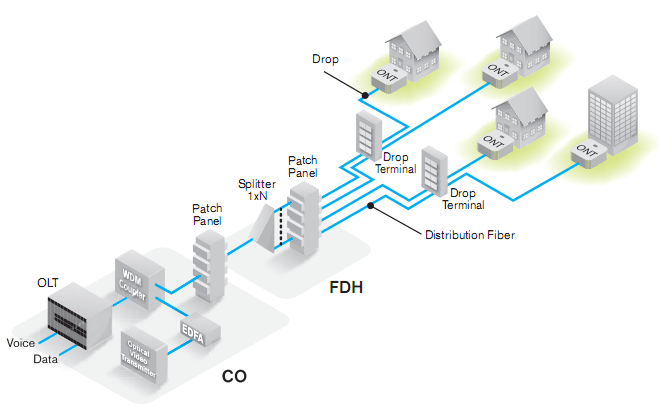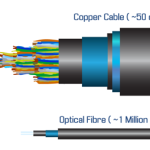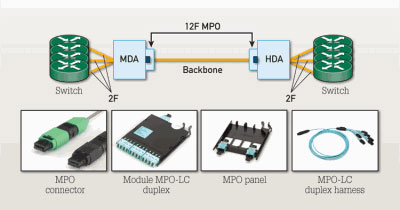AOC (Active Optical Cables) and DAC (Direct Attach Cables are both preassembled modules with cable, they are used in the data center and enterprise networks, AOCs and DACs are plug and play, allowing the existing cabling resources to upgrade without installing new fiber optic normally the DACs and AOCs are with standard cable lengths and transceivers pre-terminated in the factory. There are varieties of AOC and DAC configurations to meet different network requirements there are 10G SFP+, 25G SFP28, 40G QSFP+, and 100G QSFP28.
Structured cabling normally used with Optical Transceivers, offering the most flexible deployment, however, compared with AOCs and DACs, the optical transceivers and structured cabling network with higher cost.
Even though DAC and AOC provide an economical solution for data centre or enterprise network, but there are multiple factors to consider when choosing network cabling
1. What is the Application? TOR (Top of Rack), MOR (Middle of Row) or EOR (End of Row)
2. Media Availability, Do I have to run new cabling? Do I have patch cables on hand?
3. Distance, How long should the connection reach?
4. Budget, What is the budget currently and what is the timeline for the project?
The following table is a comparison among AOC, DAC and Structured Cabling.
| AOC | DAC | Structured Cabling with Transceivers | |
| Reach | Up to 100m | <7m (Passive) <15m (Active |
Per TIA/IEEE standard |
| Power Consumption | <1w | <0.15W (Passive) 0.5 ~1w (Active) |
1 ~ 2w |
| Cable Size | 3.0mm | 4.2mm (30AWG) | Depend upon cable deployed |
| Application | Top of Rack Middle of Row End or Row |
Top of Rack | Top of Rack Middle of Row End or Row |
| Price | $$$ | $ Passive $$ Active |
$$$$ |









